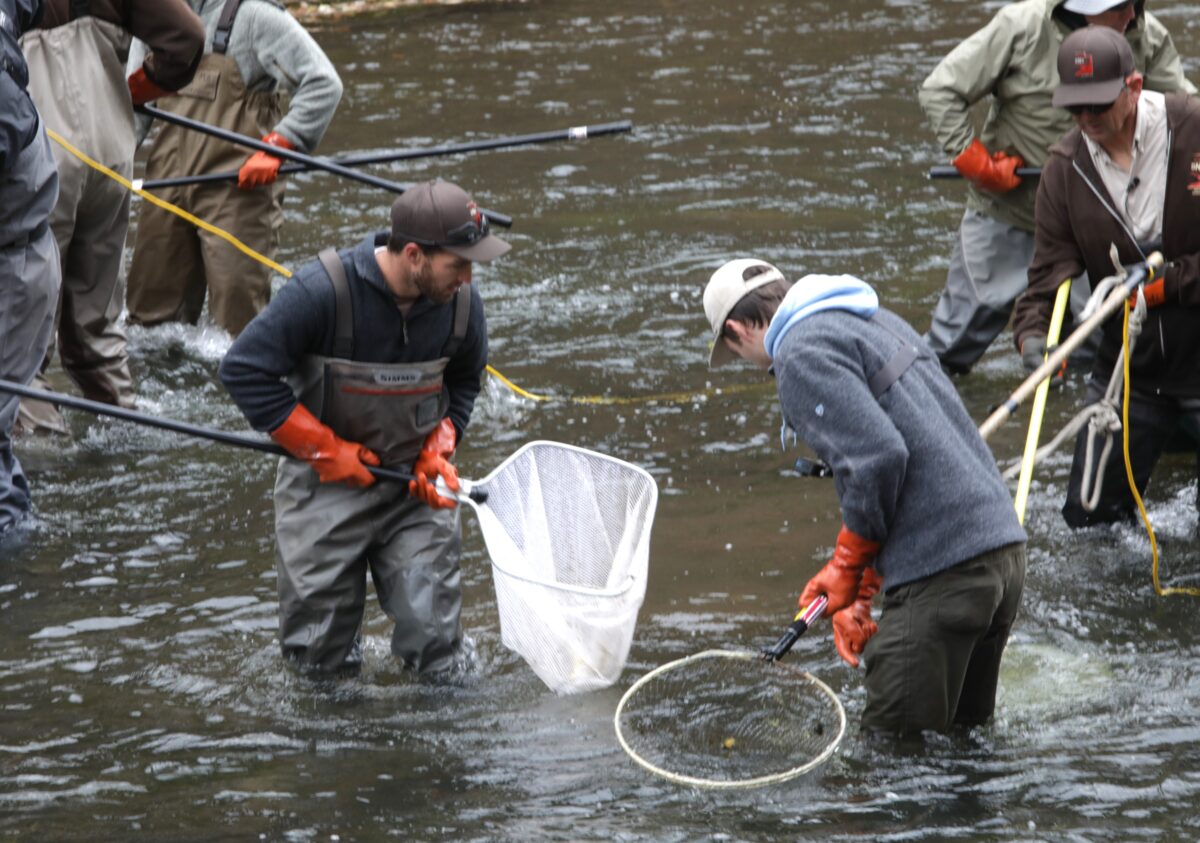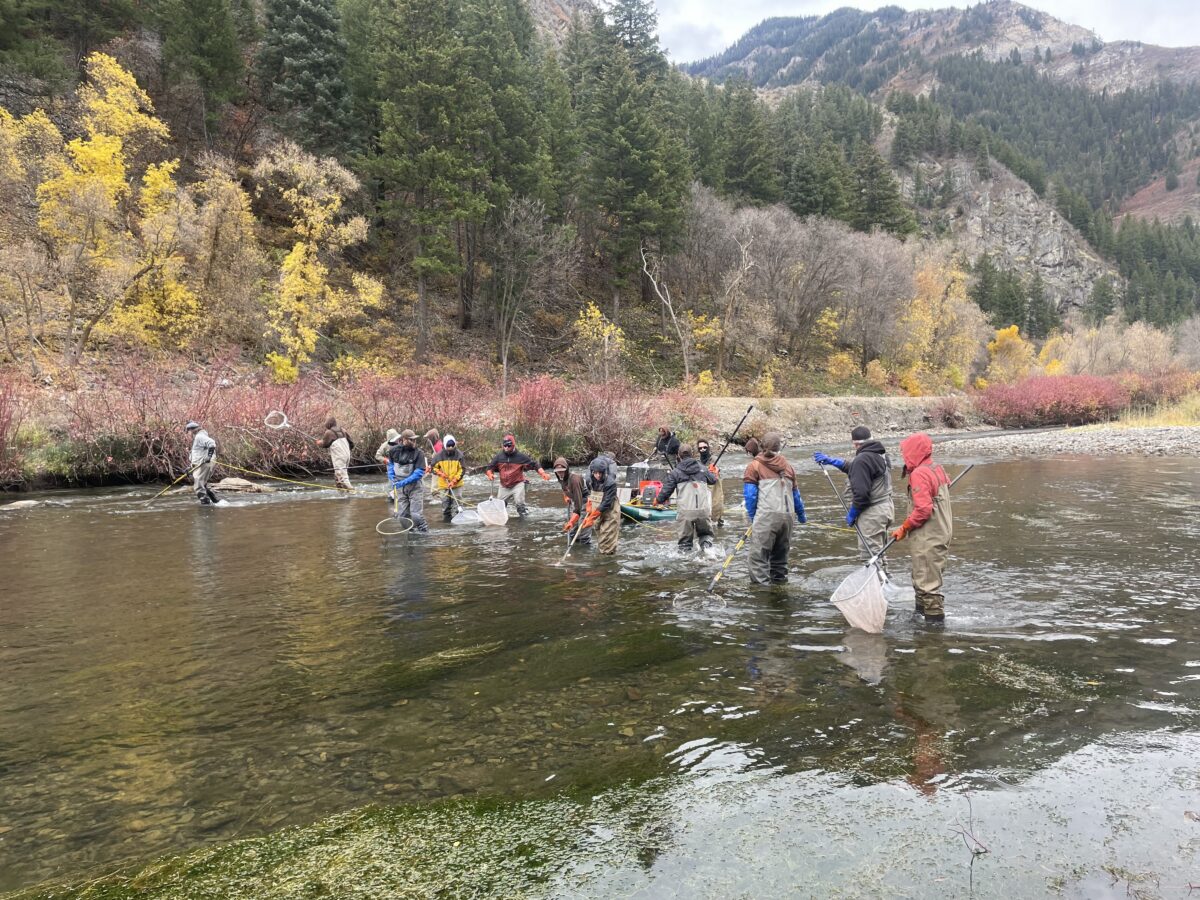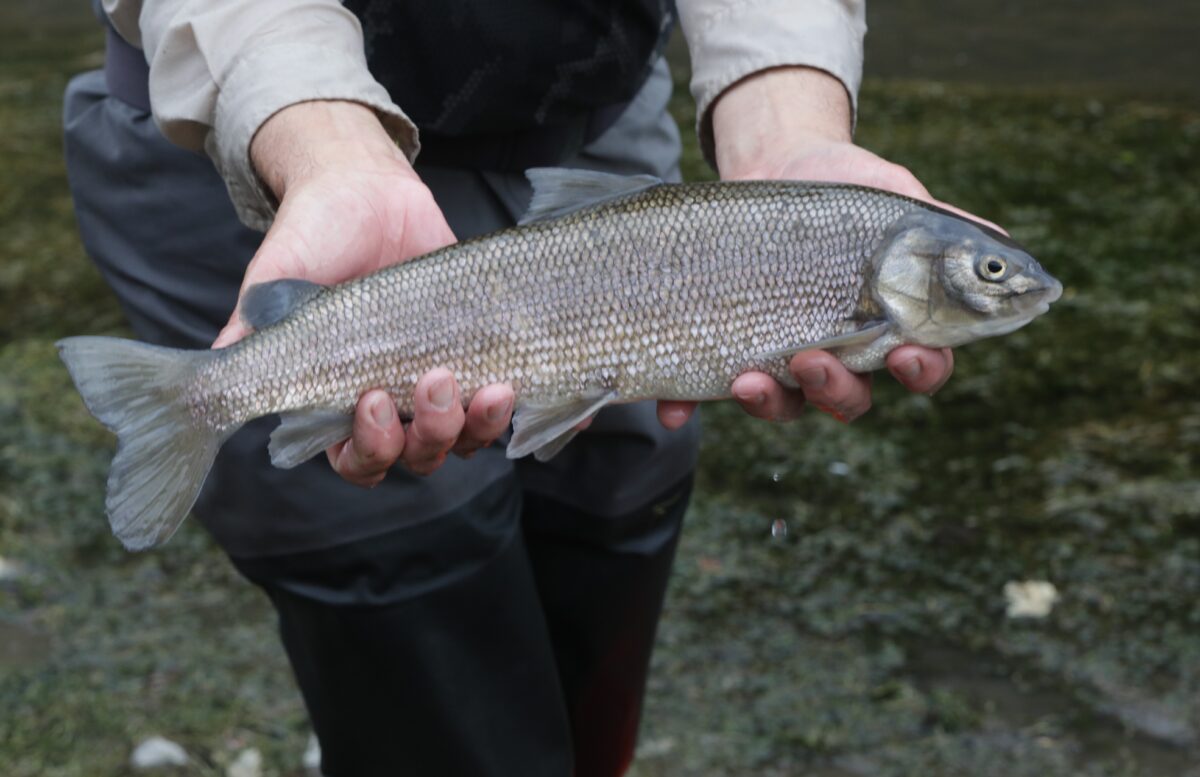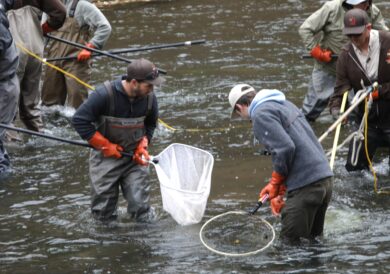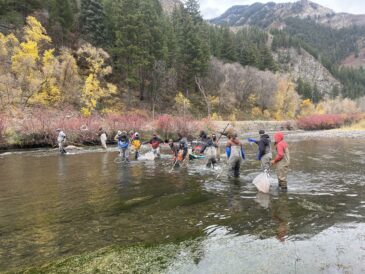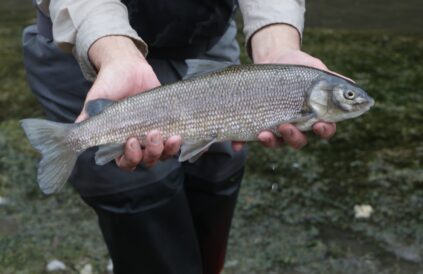An electrifying harvest: How fish data is gathered in the Provo River
- The Utah Division of Wildlife Resources workers and volunteers harvest fish out of the Provo River on Monday, Oct. 27, 2025, in Provo Canyon.
- The Utah Division of Wildlife Resources workers and volunteers harvest fish out of the Provo River on Monday, Oct. 27, 2025, in Provo Canyon.
- A mountain whitefish fished out of the Provo River is shown Monday, Oct. 27, 2025, in Provo Canyon.
The Utah Division of Wildlife Resources relied on shocking measures to survey the health of fish in the Provo River on Monday.
Braving an autumn rainstorm and chilly water, DWR professionals and a group of volunteer anglers waded into the river with rubber gloves, turned on a generator and harvested hundreds of fish that were temporarily stunned by an electromagnetic field.
The method, called electrofishing, is used to target a specific area of water and collect every fish within it to measure and weigh them before releasing them. On Monday, DWR targeted the lower portion of the Provo River, fishing an area between Wildwood and Vivian Park.
“When we capture all of those fish confidently within this stretch, it gives us a snapshot of what this stretch of the river looks like, and we can use the data from this stretch to make very good educated guesses about the rest of the system,” DWR spokesperson Michael Packer said.
The generator is placed on a modified barge on the river and releases electrified nets that sweep the river, sending out a positive charge that temporarily paralyzes the rainbow trout, brown trout, cutthroat trout and mountain whitefish that inhabit it, allowing netters to scoop them out.
“These fish are floating muscles,” Packer said. “They’re just a big muscle in the water. When they intercept this electrical field, they get drawn to it and stunned.”
The methodical process, which is done every three to five years, is important to gather data on a river that gets heavy fishing traffic, according to DWR fish biologist Tyler Robinson.
Due to its proximity to a population center, Robinson said the lower Provo River is fished year-round, bringing in millions of dollars in revenue. Sampling the four main species in the river and knowing their size and quantity gives DWR long-term trend data that is shared with anglers.
For instance, Robinson said recent high snow years have caused heavy flows that have shifted where the fish have gone and affected their populations.
“Following those trends helps us get a better understanding of what’s available to the anglers by means of numbers and sizes that those anglers can target, given how popular this system is,” Robinson said.
The first of two sweeps Monday saw anglers net 11 buckets of fish — a higher total than anticipated. The buckets are placed in the water with small holes to keep the fish alive as they await measurement.
Robinson said it is a “chaotic” process to capture all the fish because several at a time are shocked and come flowing down the river. Often, three anglers are responsible for catching 15 fish at a time.
“We do it for four days straight,” he said. “By the end of the four days, you’re tired of it because it’s hard work, but it’s really fun with all these anglers that are out here to help us today. … There’s no being nice in this game. It’s fend for yourself. And if you see a fish, go get that fish. Don’t assume the next person’s going to get it, because they might not see it. So we always tell the people there’s no sharing here.”
Based on early results Monday, Packer said the fishery of the lower Provo River is looking strong, hovering around 3,600 fish per river mile.
“We’re seeing great fish,” Packer said. “The condition of these fish are looking great, a wonderful resource for those who like to come out and get after some fish.”

